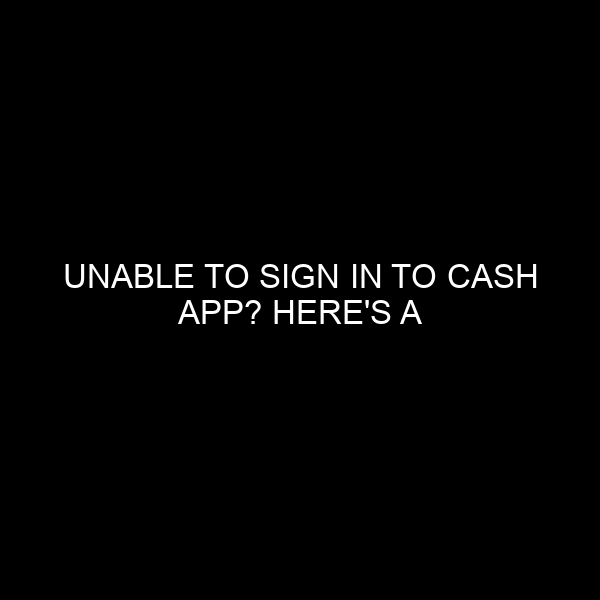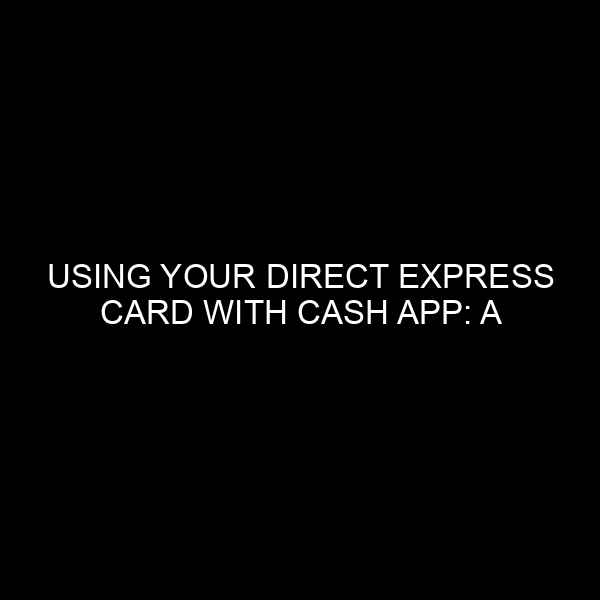Why Can’t I Borrow $50 from Cash App? An Insider’s Perspective
The rise of financial technology platforms, notably Cash App by Square, has completely transformed the way we handle money. With instantaneous transactions, peer-to-peer money transfers, and even the ability to invest in stocks, these platforms have revolutionized the banking industry. As a professional with deep roots in the financial market and banking industry, I’ve had a front-row seat to these rapid changes.
While Cash App offers a myriad of functionalities, a common question that users pose is, “Why can’t I borrow $50 from Cash App?” At face value, it might seem like a straightforward request, especially given the platform’s broad capabilities. In this article, we will delve deep into this query, exploring the economic, regulatory, and strategic aspects behind such decisions.
Understanding Cash App’s Ecosystem
Before getting into the specifics of borrowing, it’s crucial to understand the foundational model of Cash App.
1. Nature of Operations
Cash App began as a simple peer-to-peer payment platform. Over time, it introduced other features such as direct deposit, Cash Card (a customizable debit card), and even Bitcoin trading. The essence of its operation revolves around the facilitation of transactions, not necessarily lending or credit facilities.
2. Revenue Streams
A significant chunk of Cash App’s revenue comes from transaction fees, Bitcoin trading, and other ancillary services. By delving into lending, the company would need to remodel its revenue structure, something that carries inherent risks.
Regulatory Landscapes & Considerations
1. Lending Laws and Regulations
Lending money is not a free-for-all. Financial institutions have to adhere to strict regulatory standards. By offering lending options, Cash App would need to undergo rigorous compliance checks, which adds layers of complexity to its operations.
2. Credit Risk Assessment
Before lending even small amounts, a detailed risk assessment is required to ensure the borrower can repay the sum. While Cash App does have access to some user data, building a comprehensive credit risk model would be a colossal task.
The Economics of Lending Small Amounts
1. Cost-Benefit Analysis
The cost associated with administering small loans – especially amounts as little as $50 – might not justify the returns. Given that lending also involves managing defaults, recoveries, and potential bad debts, the profitability of such an operation could be questionable.
2. Interest Rates
To make small loans economically viable, higher interest rates might be necessary. But high rates could deter users, counteracting any potential benefit from the service.
Strategic Decisions & Brand Positioning
1. Core Focus
Cash App’s primary value proposition has always been ease of use and fast peer-to-peer transactions. Diversifying into lending could dilute this core message.
2. Competition
The lending market, even for small personal loans, is crowded. Banks, credit unions, and countless fintech startups already occupy this space. For Cash App to carve out a niche here would demand significant resources and strategic shifts.
User Trust and Privacy
1. Data Collection
Lending would require Cash App to collect and analyze more personal data. This increased data scrutiny might not sit well with users wary of sharing too much personal information.
2. Impacts on User Ratings
Imagine a scenario where a user is denied a $50 loan due to an algorithmic assessment. Such instances could lead to negative reviews and decreased trust in the platform.
Conclusion
While on the surface, lending $50 might seem like a trivial addition to Cash App’s services, the underlying implications are profound. From regulatory hurdles, economic considerations, strategic positioning, to user trust and privacy, there are myriad reasons why such a feature isn’t currently offered.
Nevertheless, as the fintech landscape continues to evolve, and as platforms like Cash App seek to broaden their services, who knows what the future holds? For now, though, it’s essential to appreciate the platform for its core offerings and understand that every feature (or lack thereof) is a result of careful calculation and strategic decision-making.






